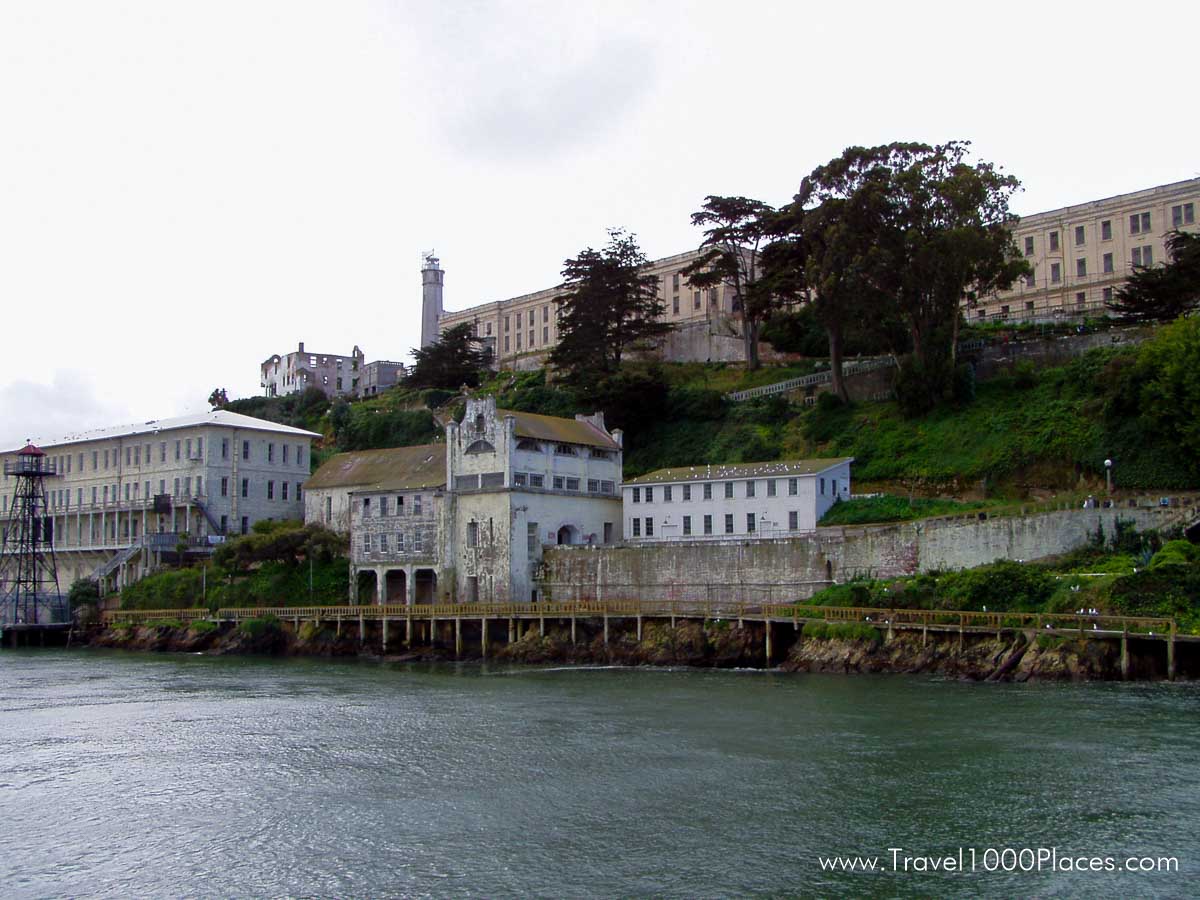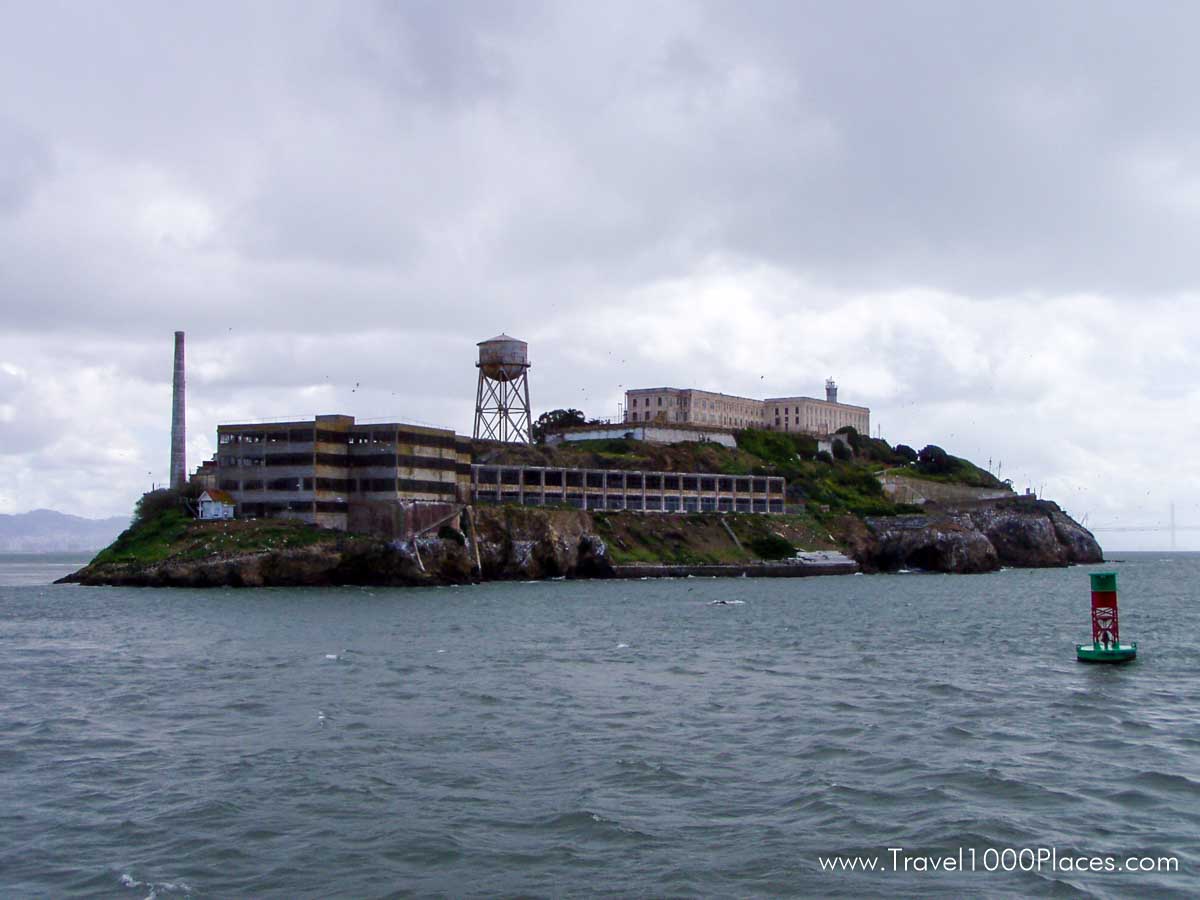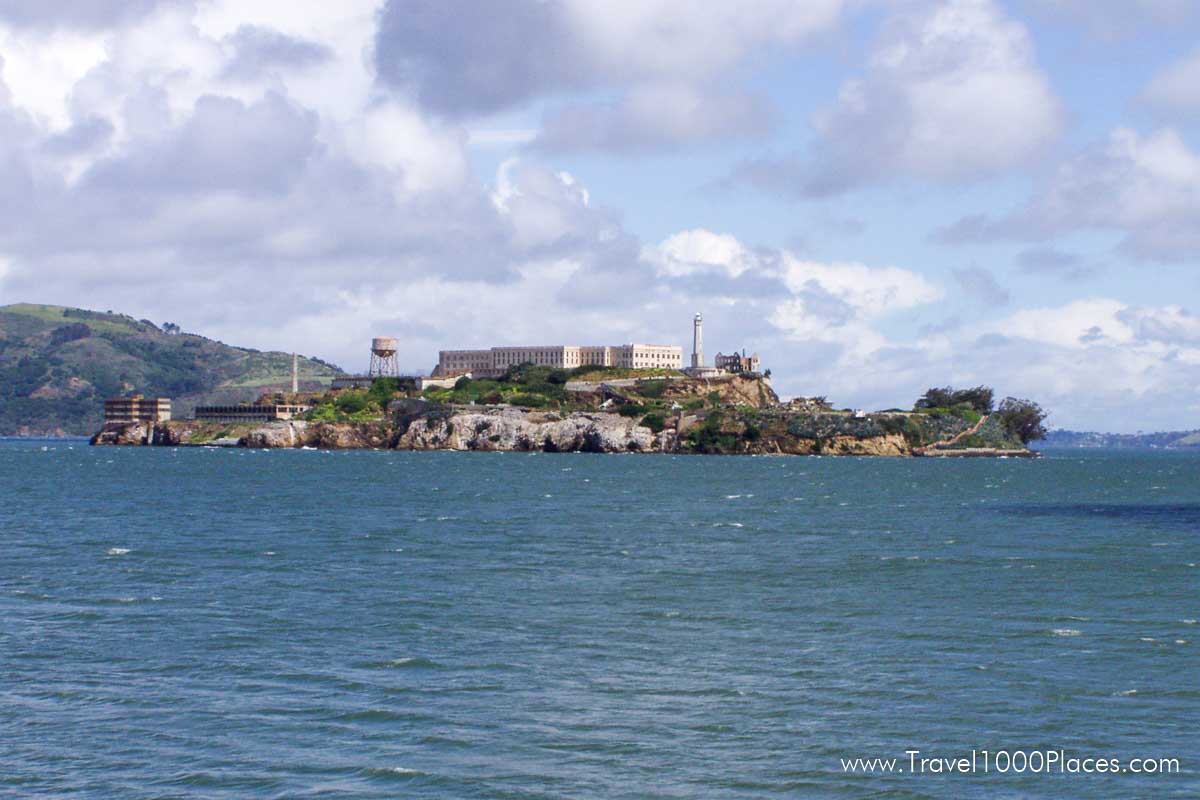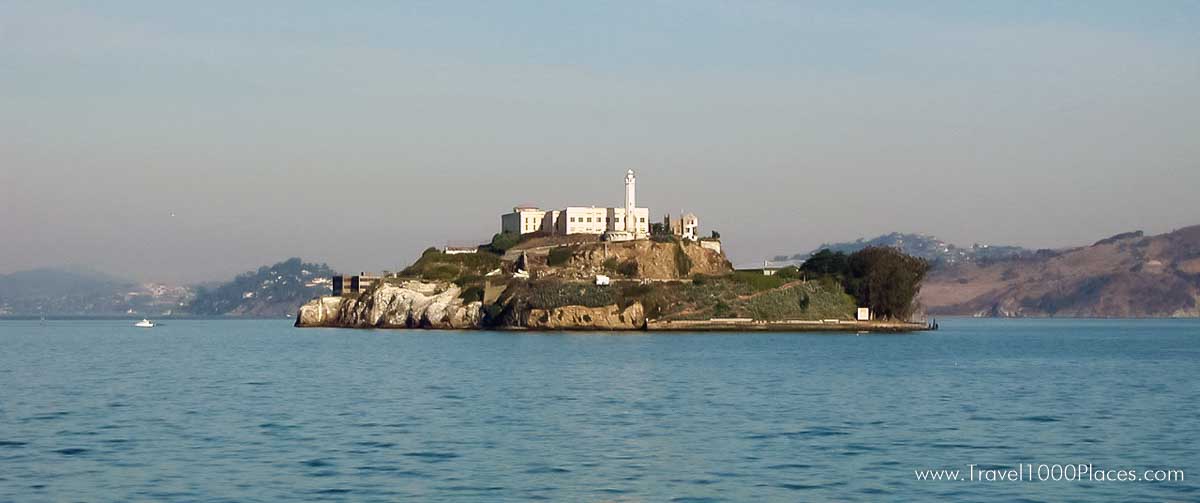



The bay’s once-grim bastion emerged from over a century of inscrutable isolation on Oct. 26, 1973. On that day Alcatraz’s current custodians, the National Park Service, opened it to the public, running tours from the San Francisco waterfront a mile and a quarter away. Access to the 12-acre island is free except for the ferry fare on the Blue & Gold Fleet. The Park Service discovered that it’s difficult to separate fact from fiction in researching the history of la Isla de los Alcatraces (Isle of the Pelicans). Under the Federal Prisons Bureau (1933-62), legend of the Devil’s Island and “Hellcatraz” genre was allowed to flourish to perpetuate The Rock’s image as a dreaded, escape-proof citadel. Since 1858 Alcatraz has been successively a fortification, a U.S. military prison, an army disciplinary barracks, a federal penitentiary and an American Indian stronghold. On March 21, 1963, the last of The Rock’s inmates–27 pale men in wrist and leg shackles–were transferred to other federal penal institutions. The last of the Native Americans who subsequently claimed the island as their birthright were evacuated June 11, 1971.
Alcatraz is now a component of the Bay Area’s 74,000-acre Golden Gate National Recreation Area created by Congress and signed into law by President Nixon Oct. 27, 1972. Many of its buildings were gutted by fires set by the Native American occupiers or razed by the General Services Administration when The Rock’s future was in limbo. But the main prison block with its steel bars, claustrophobic (9 x 5-foot) cells, mess hall, library and “dark holes,” where recalcitrants languished in inky blackness, is structurally intact. So is the windswept exercise yard with its concrete bleachers and towering walls topped by guard towers and catwalks. The road angles steeply up from the dock through a tunnel past old fortifications, staff barracks and an indoor rifle range to the tan bastille at the top. The Rock’s administrative code was ‘Complete Control. At no time did the big house’s 450 cells hold more than 250 captives. The staff ran as high as 100. This did not prevent three inmates Frank Lee Morris and John and Clarence Anglin from tunneling out with sharpened spoons in 1962. The feat took years, and they were never found. Their seemingly successful escape was a factor in the Prison Board’s decision to phase out the aging institution.
Today the ocean echoes hollowly in the prison library which leads directly to solitary. If ever you’ve had a masochistic urge to experience instant hysteria, the deep six is the place. Just ask the guide to close one of the steel-plated doors behind you.
Southwest of the main cell block, but off limits to visitors, is the industries area where convicts were kept busy turning out canvas goods, clothes, furniture and, oddly, on a waterless island, the Sixth Army’s laundry. The craggy escarpment rising 135 feet out of the bay is surprisingly verdant. From one aspect it resembles a bombed-out Italian hill town, from another a snatch of the Mediterranean coast. On a clear day, the views of the San Francisco skyline and the Golden Gate alone are worth the crossing. Even in ruins, Alcatraz is a spellbinder.
More information
Tickets & How to get there: Fees & Passes – Alcatraz Island (U.S. National Park Service) (nps.gov)
San Francisco Sightseeing & Attractions Overview
Learn about the top S.F. sightseeing and attractions in our article: San Francisco — sightseeing & attractions

